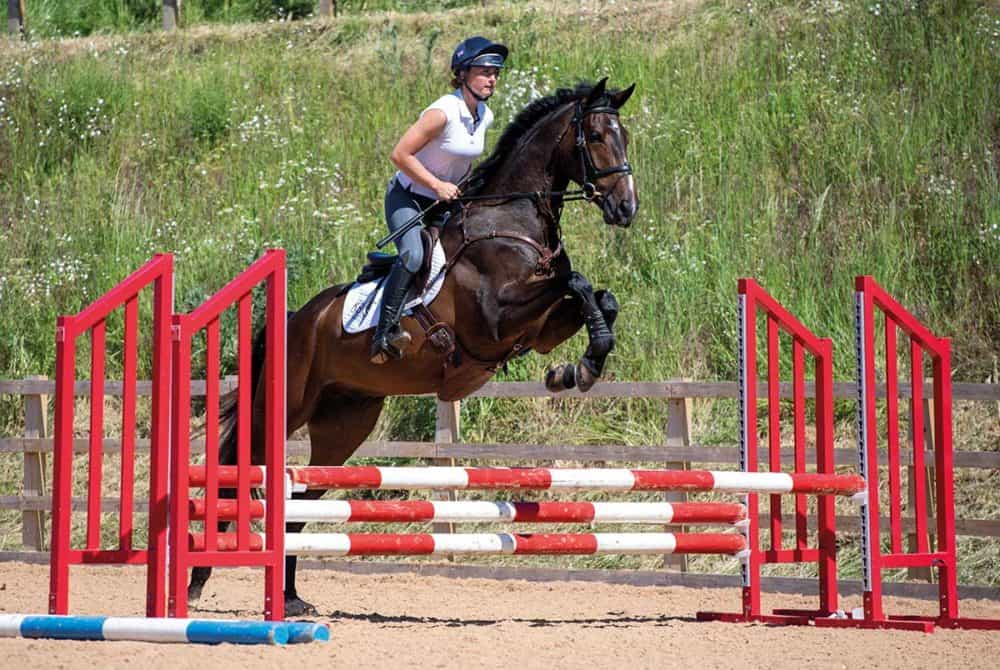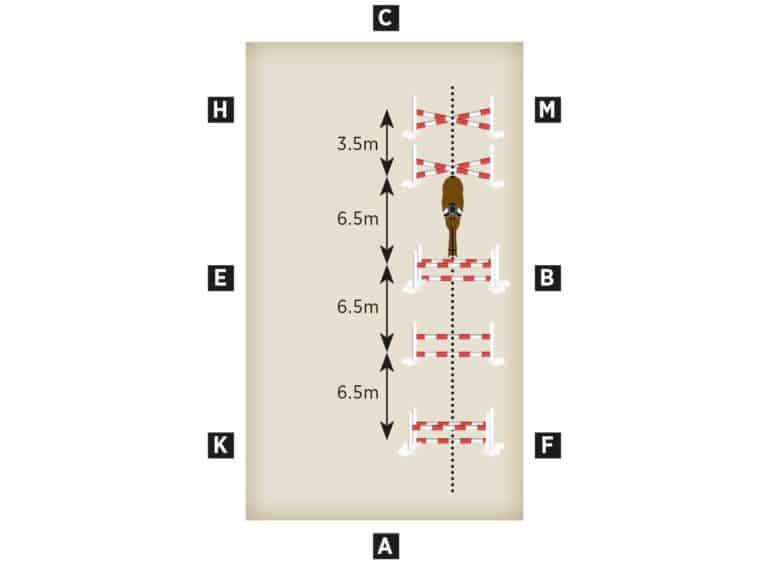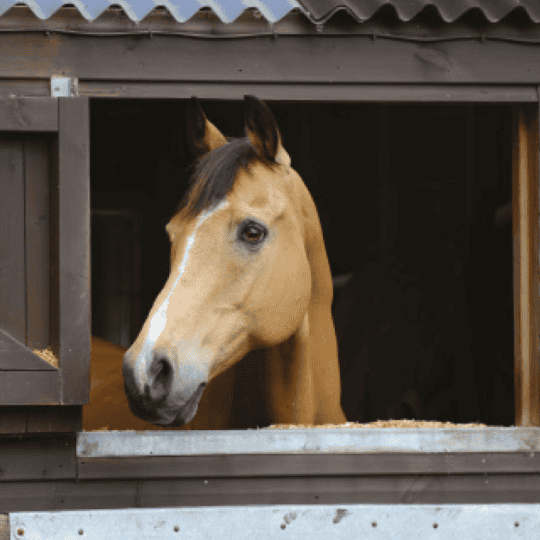Go for gridwork
Posted 6th September 2022
In this month’s instalment of eventer Sasha Hargreaves’ confidence-giving jumping series, we try a simple but effective grid – and there are lessons to take away for horses of all abilities

Gridwork’s a versatile addition to any jumping toolkit, but if you don’t know how to get started, it can feel a bit daunting. However, I’ve got a set-up that I swear by, which is as useful for youngsters as it is for more established horses. Better still, you could build it up over as many sessions as you like. Let’s get started.
Set it up
For this, you’ll need…
- at least five pairs of wings or blocks, but ideally seven
- at least 12 poles
You’ll benefit from having a helper on the ground to adjust the striding, if needed, especially when you’re introducing your horse to the grid.
Once fully set up, the grid is a cross-pole bounce (3.5m), followed by three jumps on a short one-stride distance (6.5m). Setting the grid up in this way makes it easy for your horse to navigate even if all of the elements aren’t raised into jumps – provided you’ve got him working forward positively, he’ll be able to easily canter down the line no matter which elements are raised.

STEP ONE – Easy introductions
Introduce your horse to the grid during your warm-up by first working him around it, weaving him in and out of the wings and riding circles and serpentines that ask him to work alongside the set-up. Then, with just the first two jumps raised to a bounce of small, welcoming cross-poles, you’re almost ready to begin.
Before approaching the grid properly, I’ll often allow my horse to stand in front of the first element to take it all in. This particular grid provides plenty for a horse to look at, especially a young, nervous or inexperienced one. Therefore, it’s important he’s had time to digest it so he doesn’t feel intimidated before you try and approach it.
STEP TWO – On the bounce
Trot in to start with as this is a really nice way to introduce your horse to all the wings and the poles. It’s natural for him to want to look at everything, so ride with a soft hand but a driving leg to keep him moving forward. Allow him to continue down the line in whatever pace he lands in – trot is fine to start with, but ultimately you’ll want to channel him down in canter.
Keep your leg on to encourage your horse forwards, with a soft hand and a light seat. Forward energy and enthusiasm is all you can really ask for from your horse at this point, so don’t fight him if he’s feeling keen. He’ll naturally start to back off when we increase the challenge later.
Cool, confident, calm and collected – that’s the feeling you’re trying to achieve through the grid – so keep that in mind from the start. Don’t feel the need to rush into canter if he’s happy trotting in. Instead, wait until your horse seems totally confident – on the brink of bored – before upping the pace and riding the bounce from canter. It isn’t much harder for your horse to pop it in trot, especially when the height’s low and confidence-giving.
Check out October Horse&Rider to read more of this month’s instalment of eventer Sasha Hargreaves’ confidence-giving jumping series – on sale now!











